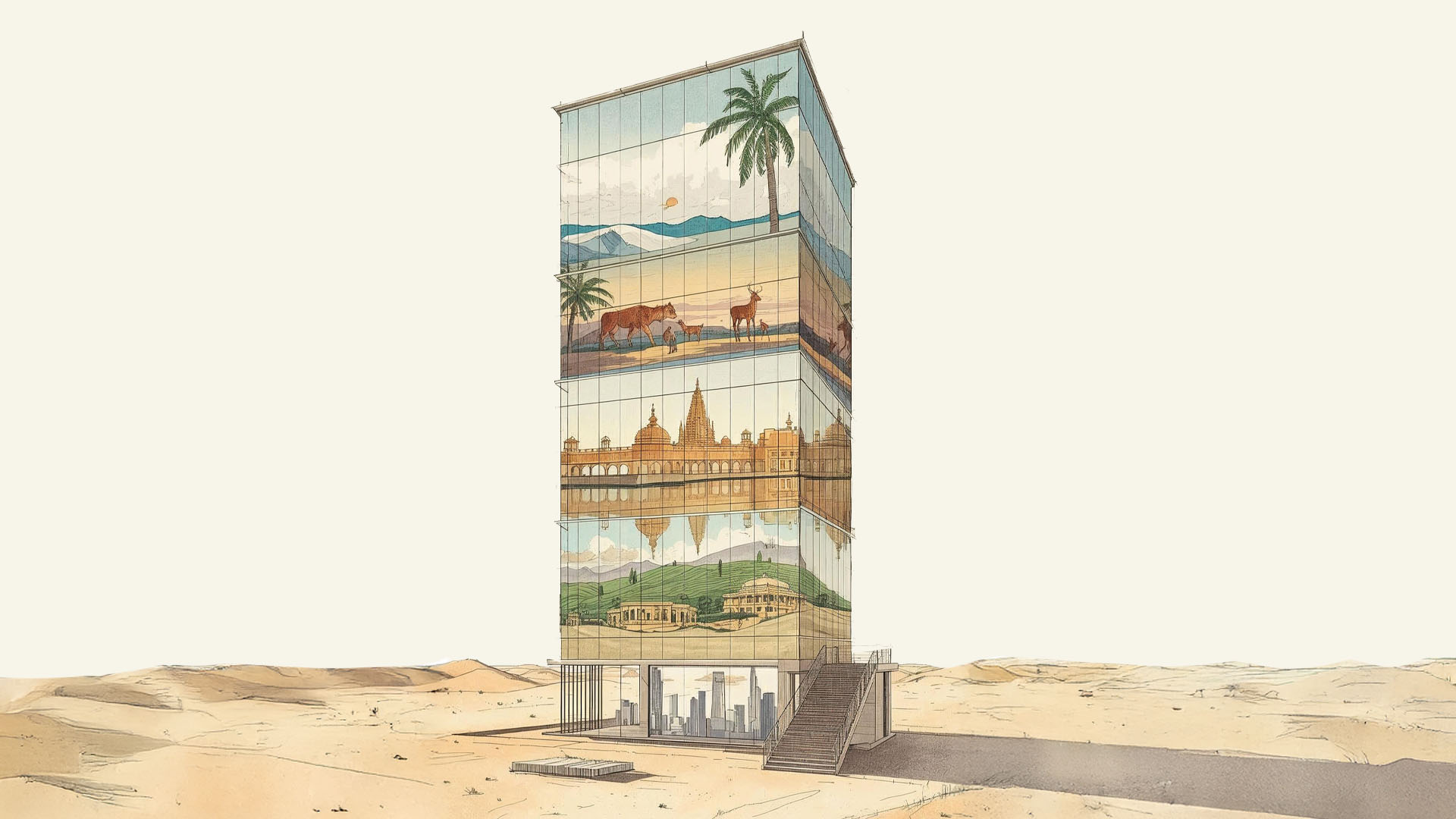India Recharted
India’s travel landscape is transforming, with emerging destinations reshaping traveller experiences and hospitality investment.
By Deepali Nandwani
India’s travel map is being redrawn, weaving timeless heritage with bold, modern experiences. Tourism is decentralising from marquee spots to offbeat valleys, secondary cities, and niche pilgrimage and food circuits. Improved infrastructure, rising affluence, campaigns like Dekho Apna Desh, experiential journeys, and remote work are unlocking new frontiers.
“India’s tourism landscape is evolving at an unprecedented pace, with emerging destinations now taking centre-stage,” says Suma Venkatesh, Executive Vice President – Real Estate & Development, IHCL. While metros and leisure staples such as Goa, Kerala, and Rajasthan endure, demand has surged in Tier 2/3 cities (Coimbatore, Ludhiana, Jorhat), spiritual hubs (Vrindavan, Prayagraj, Ujjain, Ayodhya), industrial corridors (Hosur, Sanand, Dholera), and offbeat spots (Sindhudurg, Naldhera, Lataguri, Raichak). IHCL leads with Taj resorts in Lakshadweep’s Suheli and Kadmat islands, besides recent luxury launches in Wayanad, Puri, Gangtok, Patna, and Dehradun. IHCL’s brandscape caters broadly: Taj anchors luxury in Darjeeling and Rajasthan palaces; Tree of Life and amã Stays & Trails offer boutique homestays for curated experiences, says Venkatesh.
Khushnooma Kapadia, Vice President – Marketing, South Asia, Marriott International, highlights Coorg and Rajasthan/Madhya Pradesh’s heritage cities as alternatives to Jaipur, Udaipur, and Jodhpur. “Marriott’s Series by Marriott partnership adds 100+ midscale/upscale hotels in Tier 2/3 markets,” she says.
Spiritual tourism is the new frontier: Ajay K. Bakaya, Chairman, Sarovar Hotels and Director, Louvre Hotels India, notes growth in Bodhgaya, Varanasi, Ayodhya, and Mathura-Vrindavan. Kadambini Mittal, Regional Vice President - Commercial, India Southwest Asia, Hyatt, flags Katra (the gateway to Vaishno Devi) for meaningful experiences. “Leisure spots (Lansdowne, Igatpuri, and Kasauli), urban nodes (Greater Noida, GIFT City) and cultural pockets (Pushkar, Kumbhalgarh, Kochi) offer long-term scalability, distinct brand positioning, and opportunities for meaningful local partnerships, powered by incomes and infrastructure,” she says.
Hyatt is expanding with Destination by Hyatt in Jaipur and Jim Corbett (2026), The Unbound Collection in Bhopal’s Noor-Us-Sabah Palace, and all-inclusive Hyatt Ziva/Zilara resorts.
Nikhil Sharma, MD & COO, Radisson Hotel Group South Asia, talks about offering authentic experiences spotlighting cultural towns, wellness retreats, and coasts. Radisson’s signings include Pawna Lake, Lucknow, Rajkot, Shirdi, Siliguri, Bhuj, Darbhanga, and Prayagraj, with midscale dominating the 2025 signings nationwide. “While luxury properties will continue to thrive in marquee destinations, the next wave of growth will be powered by mid-scale hotels in high-demand regional markets. Smaller towns with cultural or spiritual identities, wellness-led hill retreats, and coastal regions are gaining centrestage. Business travel is spreading into Tier 2 and 3 cities, reshaping how travellers and investors view India’s tourism future.”
Anuraag Bhatnagar, CEO, The Leela Palaces, Hotels and Resorts, underscores this evolution unfolding beyond metros and adds, “Luxury travellers seek restoration, discovery, and transformation. Demand is projected to outpace supply, driven by rising affluence, global connectivity, and the shift toward experiential travel.” He notes that leisure and wellness hubs such as Kerala’s backwaters—Ashtamudi and Kovalam—are being rediscovered, while Agra, Sikkim, and Rajasthan’s deeper circuits are being reimagined through luxury hospitality. “Spiritual hubs such as Ayodhya are transforming into experiential centres, and wildlife destinations such as Ranthambore and Bandhavgarh are gaining global prominence. Even urban micro-hubs such as Mumbai’s BKC are evolving into lifestyle districts anchored by luxury hotels.”
The Leela’s growth strategy reflects this shift. “We’re building a balanced portfolio across leisure, cultural, spiritual, and business destinations, with upcoming openings in Agra, Sikkim, Ayodhya, Bandhavgarh, and Mumbai BKC. But our focus isn’t merely to open hotels—it’s to shape how these destinations are experienced for years to come.”
A view to which Sarbendra Sarkar, Managing Director & Founder, Cygnett Hotels & Resorts, agrees. He sees Vadodara, Lucknow, Visakhapatnam, Surat, and Indore as business hubs. Aniruddh Kumar, Vice President - Development, India & South Asia at Accor, notes Alibaug, Amritsar, Indore, and Vadodara attract multifaceted travellers, and so do spiritual/cultural spots such as Nashik, Prayagraj, Varanasi, Rishikesh and Haridwar. “These cities are aligning with the evolving preferences of today’s diverse travellers, and our expansion strategy is focused on capitalising on their promise.”
Adding a fresh lens on untapped luxury circuits, Akanksha Lamba, Vice President – Strategy, The Postcard Hotel, says the group focuses on markets such as Chikmagalur, Coonoor (for its coffee culture); Tirupati (modern luxury); and wildlife in Jawai, Kanha, Pench, and Chitwan (Nepal). “Our guests seek depth, meaningful connection, and authenticity.”
Lamba contends that international visitors still view India narrowly—Rajasthan, Kerala, and Agra dominate itineraries—while domestic travellers miss lesser-known regions due to a lack of narrative. “Whether it’s Pasighat’s Siang River, Himachal’s Kangra Valley, or Jawai in Rajasthan, guests expect context-driven, sensorially rich experiences delivered with seamless care.”
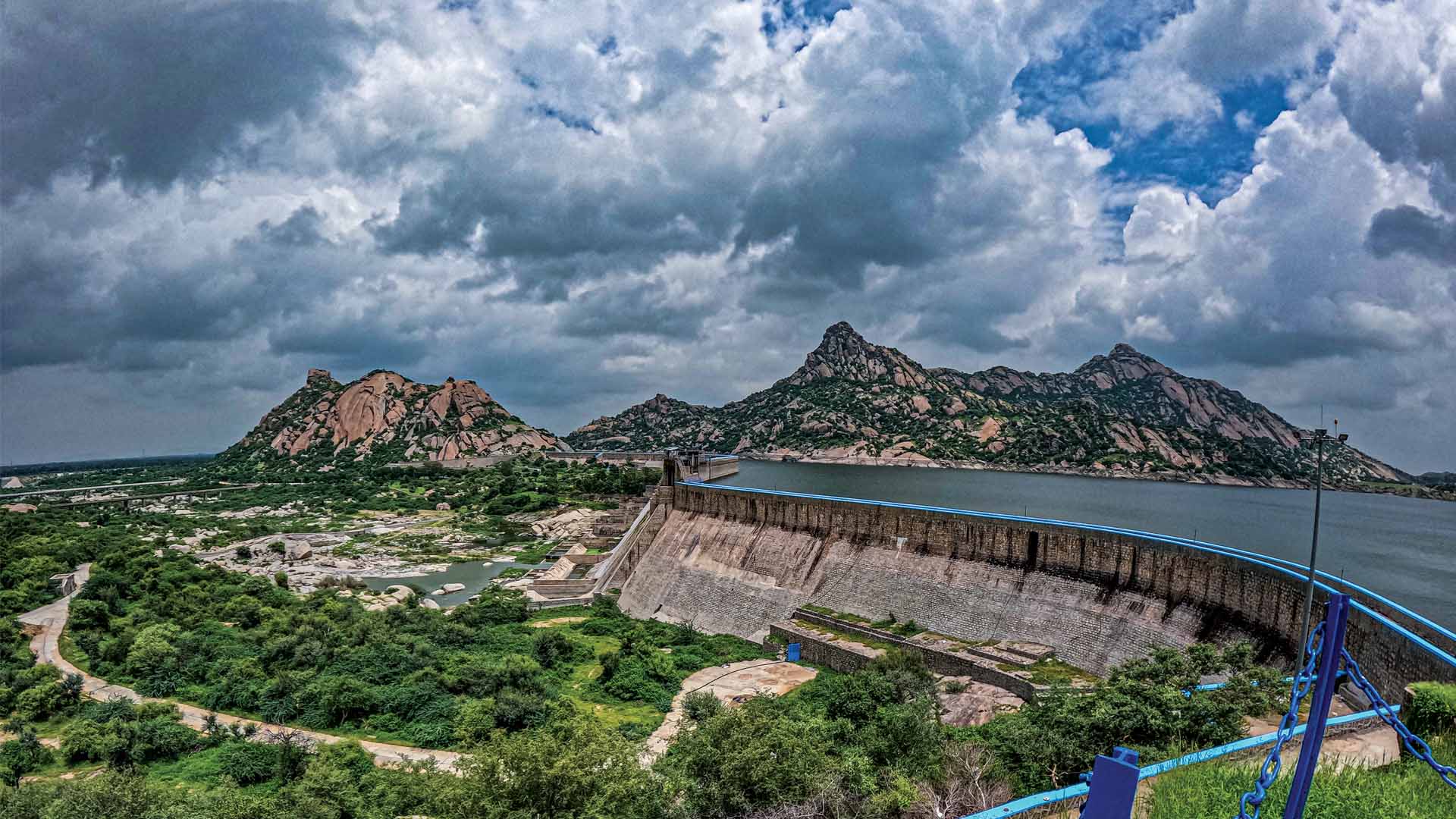
Jawai in Rajasthan is quietly becoming one of India’s most distinctive luxury wilderness destinations, where leopards roam freely.
Mandeep Lamba, President & CEO (South Asia), HVS Anarock, observes a broadening travel canvas across India. “Leisure and wellness hubs such as Varkala, Chikmagalur, and Rishikesh are gaining traction, while Ayodhya, Bodhgaya, and Vrindavan are reshaping spiritual travel,” he notes. “Heritage-rich towns such as Ajmer, Bundi, Hampi, and Majuli are drawing attention, even as business hubs such as Noida, GIFT City, and Navi Mumbai expand rapidly.” He adds that the government’s plan to develop 50 tourism circuits underscores India’s shift from checklist tourism to immersive, interest-led exploration.
While destinations such as Lucknow and Haridwar have long featured on India’s travel map, branded hotels are taking greater interest, driven by renewed demand from business, spiritual, and leisure travellers. “Lucknow and Amritsar, in particular, are emerging as culinary hotspots where food rivals heritage as a draw,” says Bakaya. “Millennials and Gen Z are seeking wellness, adventure, and culinary experiences in destinations like Sindhudurg, Udaipur, Bodhgaya, and Dharamshala.”
Experiential and wellness travel major CGH Earth Experience Hotels is working to create the right ambience and environment to nurture new destinations. Managing Director Michael Dominic explains, “These locations must have basic infrastructure like airports or railways. We’re starting a property in Sakleshpur, Karnataka, and exploring the hills of Goa—moving away from beaches into its forested hinterlands. The Odisha government has also invited us to explore opportunities.”
Boutique brands such as The Postcard Hotel and Brij Hotels are similarly expanding into emerging leisure markets. “We see Bandhavgarh evolving into a design-led wildlife and leisure hub; Bundelkhand’s riverine villages opening up for cultural retreats; and Pali and Kuchaman in Rajasthan drawing heritage travellers who want privacy over crowds,” says Udit Kumar, Co-founder, Brij Hotels. “Ghorakhal near Nainital is quietly becoming a soulful spiritual outpost, while Kerala’s hill country and the Kumaon belt attract guests seeking quiet luxury.”
Improved connectivity has made emerging leisure destinations particularly attractive. The Northeast, particularly Ziro Valley, Tawang, and Pasighat (Arunachal Pradesh), long known but underdeveloped, are gaining traction. In Maharashtra, Alibaug is luring branded hotels, while Nagpur’s Koradi lake has become an eco-magnet. Rishikesh and Mussoorie have benefitted from easy access via Jolly Grant Airport, and are ideal destinations for corporate off-sites, leisure travellers, and MICE events.
Jehangir Aibara, Director, Mahajan & Aibara, notes, “The far north holds immense potential, though infrastructure gaps remain. Destinations such as Lakshadweep and the Andamans await proper infrastructure and room inventory to realise their promise. Pushkar, meanwhile, has evolved into a wedding destination supported by larger hotels and improved facilities.”
Among newer coastal destinations, Sindhudurg stands out, strongly backed by the Maharashtra government. “It’s emerging as a competitor to Goa,” says Aibara. “Supported by tourism incentives and stunning beaches, key players such as Taj, Sarovar, and Westin are entering the market, even as road connectivity continues to improve. Similarly, Bekal—pioneered by Taj and The LaLit—is seeing new hotels that will boost its social and leisure infrastructure.”
Sindhudurg’s appeal lies in its diversity—from budget stays to high-end luxury. Giles Knapton, Founder, Coco Shambhala, one of India’s most exclusive coastal retreats, says, “India’s depth of experiences is unmatched, and travellers are no longer chasing only the obvious hotspots. Sindhudurg and the Konkan coast are rising as authentic alternatives. In spirituality and wellness, parts of Karnataka and Uttarakhand are drawing seekers to nature-rooted retreats, while culinary travel is booming as people rediscover regional flavours—from Malvani seafood to millet-based southern fare.”
Pilgrimage circuits are evolving beyond religious tourism to embrace mindful travel and personal renewal. Manav Thadani, Founder-Chairman, Hotelivate, observes, “Parallelly, wellness resorts, nature-based retreats, and integrated spa destinations are thriving, especially in scenic leisure hubs and secondary markets where natural settings and lower costs encourage innovation. These cater to domestic and global guests seeking holistic health and immersive cultural experiences.”
Connectivity is the biggest enabler. “India now has the world’s second-largest road network, with rapid expansion making smaller cities, heritage towns, and scenic locations accessible. What were once ‘offbeat’ destinations are now within easy reach of metros—fuelling leisure and business travel and driving hotel brands to invest beyond traditional markets,” he adds.
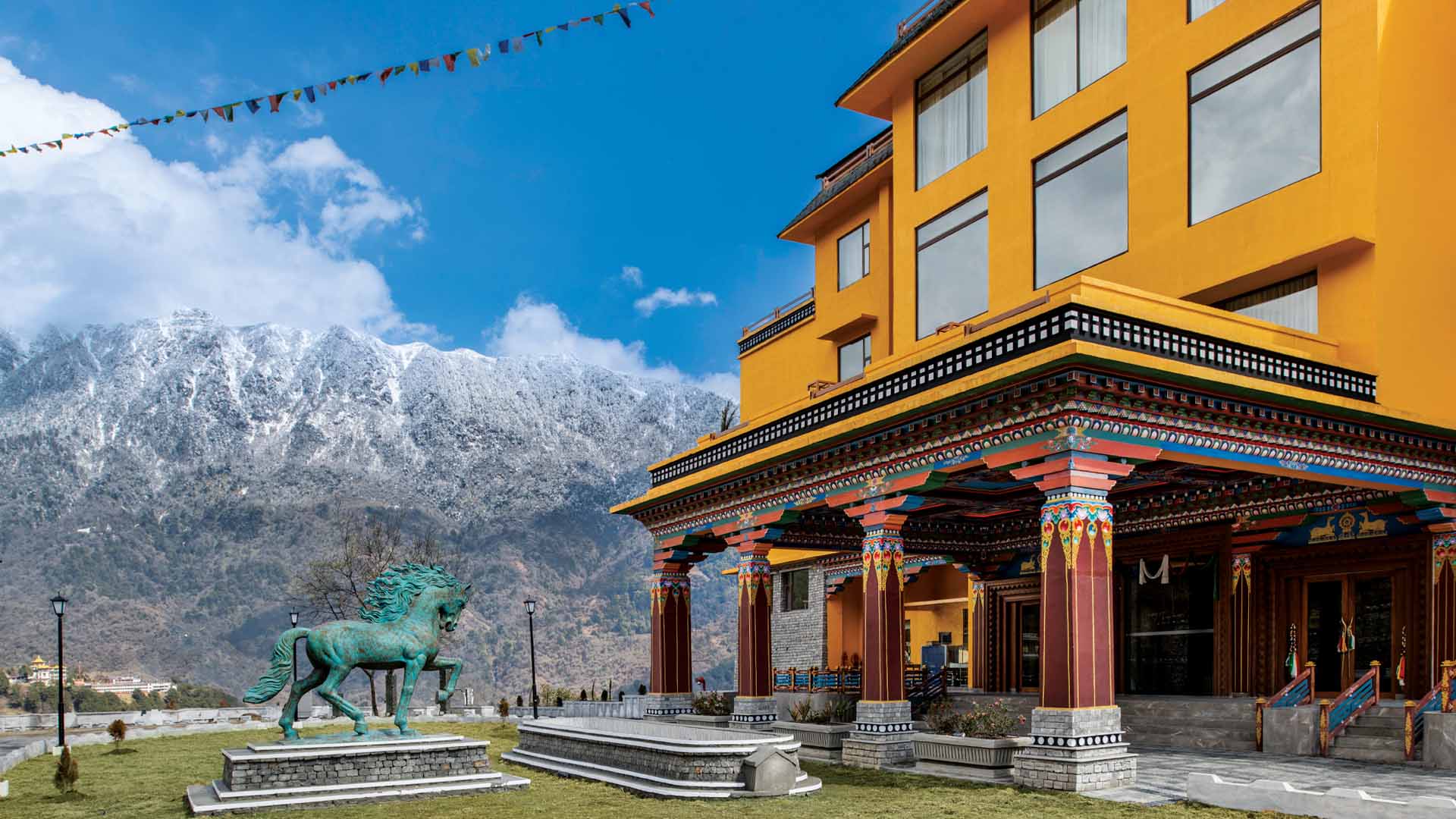

Hotels such as Highland Sarovar Portico are tapping into Sindhudurg’s coastal charm and tranquil seclusion to create an immersive getaway experience.
Opportunities for hoteliers
Emerging destinations present “a compelling investment landscape defined by first-mover advantage and the ability to shape the future of travel,” says Mittal. With India’s economy outpacing global trends and a growing base of high-net-worth individuals (HNWI), “there is rising demand for exclusive, culturally nuanced experiences beyond saturated metro markets. These destinations offer lower entry costs, scalable growth, and the chance to build differentiated offerings that combine wellness, local culture, and personalised luxury.” Many of these markets remain under-supplied in quality branded accommodation despite rising demand. “The demand–supply imbalance in such regions is significant, and early inroad allows us first-mover advantage,” says Venkatesh.
Over the past few years, investor focus has shifted steadily toward Tier 2, 3, and 4 cities, satellite towns, and emerging leisure hubs. Mandeep Lamba of HVS Anarock says, “Developers have the opportunity to establish early market leadership and shape the hospitality landscape.”
Leisure-centric towns are increasingly attracting wellness travellers, wedding groups, and spiritual tourists, while business-oriented secondary cities are witnessing steady corporate demand, backed by expanding manufacturing and IT/ITeS hubs. “In these cities, weekdays are dominated by corporate travellers, while weekends see a rise in social MICE and transient business,” Lamba explains.
Kapadia notes that while midscale and premium hotels drive volume growth, luxury and ultra-luxury categories are creating visibility and long-term brand equity in high-value niches. “A balanced portfolio across segments ensures scalability and sustainability,” she says. Early entrants not only secure market presence but also catalyse regional economic development. “Hospitality becomes a driver of growth rather than a by-product,” she adds, pointing to Marriott’s 2025 partnerships with Ventive Hospitality and Brigade Group to add over 2,400 rooms across India.
For hoteliers, untapped markets with limited branded supply offer the greatest potential. “Destinations such as Gopalpur or Palampur present viable alternatives to saturated hubs,” says Sharma. “By investing early, brands can shape guest expectations, establish loyalty, and anchor a destination’s evolution.”
Akanksha Lamba of The Postcard Hotel observes that luxury in emerging destinations allows brands to define rather than compete. “By integrating with the landscape, culture, and community, hotels can enhance rather than disrupt their settings—creating iconic properties that shape perceptions and elevate the destination.”
Bakaya adds, “Leisure growth is being driven by pilgrimage and experiential travel, while business demand arises from industrial corridors, new airports, and government-led economic centres. Mid-market in less-developed market remains the sweet spot as aspirational travellers seek quality, affordability, and authenticity over opulence. Our hotels combine consistency and safety with regional touches in design, cuisine, and experiences—appealing to both local and global travellers.”
Tier 2 and 3 cities, with lower entry costs and faster scalability, continue to attract developers. “Destinations within one to two hours of major cities—such as Faridabad, Sohna, the ECR corridor near Chennai, and hubs such as Rajkot and Surat—are emerging as attractive micro-markets,” says Aniruddh Kumar of Accor. Hyatt’s Mittal adds, “Our expansion follows where guests are going. We assess connectivity and demand drivers and align the right brand accordingly, whether Hyatt Regency for business hubs or Hyatt Place for fast-growing leisure markets.”
Sarovar’s expansion strategy is similarly data-driven. “We enter markets with long-term tourism or industrial potential, even if under-penetrated today,” says Bakaya. “Early entry allows us to balance risk with strategic presence, while our flexible brand architecture lets us tailor product to market potential.”
Michael Dominic of CGH Earth Exeperience Hotels sees strong luxury potential in new destinations. “Earlier, low ARRs limited returns, but today emerging markets deliver both high occupancy and strong rates,” he says. “This makes them ripe for investment.” Brij Hotels’ Udit Kumar adds, “The boutique space thrives on experience-driven resorts under 25 keys. Adaptive reuse of heritage homes or forest estates offers irreplicable charm. While intimate luxury remains our sweet spot, we also see growth in chic mid-market lodges in wildlife and craft clusters.”
Anuraag Bhatnagar, CEO of The Leela Palaces, Hotels and Resorts, highlights the strategic opportunity in defining new luxury markets. “With India’s luxury ARRs still far below those in London, Dubai, or Singapore, there’s enormous headroom for growth,” he says. “The opportunity lies in creating category-defining icons early—properties that can sustain premium pricing and long-term RevPAR leadership.” He notes that The Leela consistently delivers 1.3x ARR and 1.2x RevPAR versus peers, “validating the power of investing in distinctive destinations”.
Diversification through ARQ (its private members’ club) and The Leela Luxury Residences extends engagement beyond a single stay. “India’s luxury story is being rewritten in destinations that offer immersion, transformation, and storytelling,” he adds. “We aim not just to participate in emerging destinations, but to shape their global narrative.”
Several factors are drawing hotel brands to these new destinations. “Groups like IHCL and Marriott are leveraging sub-brands to tap into second-tier cities,” says Aibara. “Success often hinges on partnering with first-time owners who understand local dynamics.” He, however, cautions that not all emerging markets can sustain upper-upscale hotels. “Amravati in Maharashtra, for instance, has limited business travel but surging wedding demand—illustrating both the risks and opportunities of niche markets.” Among the factors behind the foray into uncharted territories, Bhatnagar mentions a “white space in luxury supply. With luxury hotels forming just 17% of branded stock, first movers can sustain pricing power.
India’s emerging destinations present opportunities across both leisure and business travel, calling for a balanced portfolio strategy. Hyatt’s Mittal views this through a dual lens—serving discerning domestic travellers seeking exclusivity while attracting international guests drawn to India’s spiritual and wellness heritage. “From sound healing at Grand Hyatt Kochi Bolgatty to Tibetan rituals at Hyatt Regency Dharamshala, our offerings are designed to foster loyalty and advocacy,” she says.
Leisure hubs are being shaped by demand for wellness and lifestyle-led stays, where travellers seek experiences that marry comfort with culture and nature. “These destinations are ideal for brands that can integrate local storytelling, culinary traditions, and wellness into the guest journey,” Mittal adds.
The challenge lies in balancing growth across leisure and business markets. “Both segments present significant opportunities—albeit for very different reasons,” notes Kapadia. Leisure travel thrives on domestic exploration and cultural immersion, while business destinations benefit from regional development, government incentives, and expanding infrastructure.
Sharma adds, “The larger opportunities in the near term are concentrated in leisure and spiritual destinations, where experiential travel is driving post-pandemic demand, while business travel remains resilient in second-tier markets.”
With performance metrics pointing to steady growth in leisure-driven markets and sustained resilience in top-tier cities, Thadani underscores what he calls India’s transition into a ‘leisure era’. “Domestic tourism has boosted performance metrics across multiple leisure destinations. Yet the top four or five urban markets continue to show strong year-on-year RevPAR growth, even as barriers like limited space restrict new projects. Opportunities exist across segments, but factors such as location, type of development, and branding ultimately define positioning.”
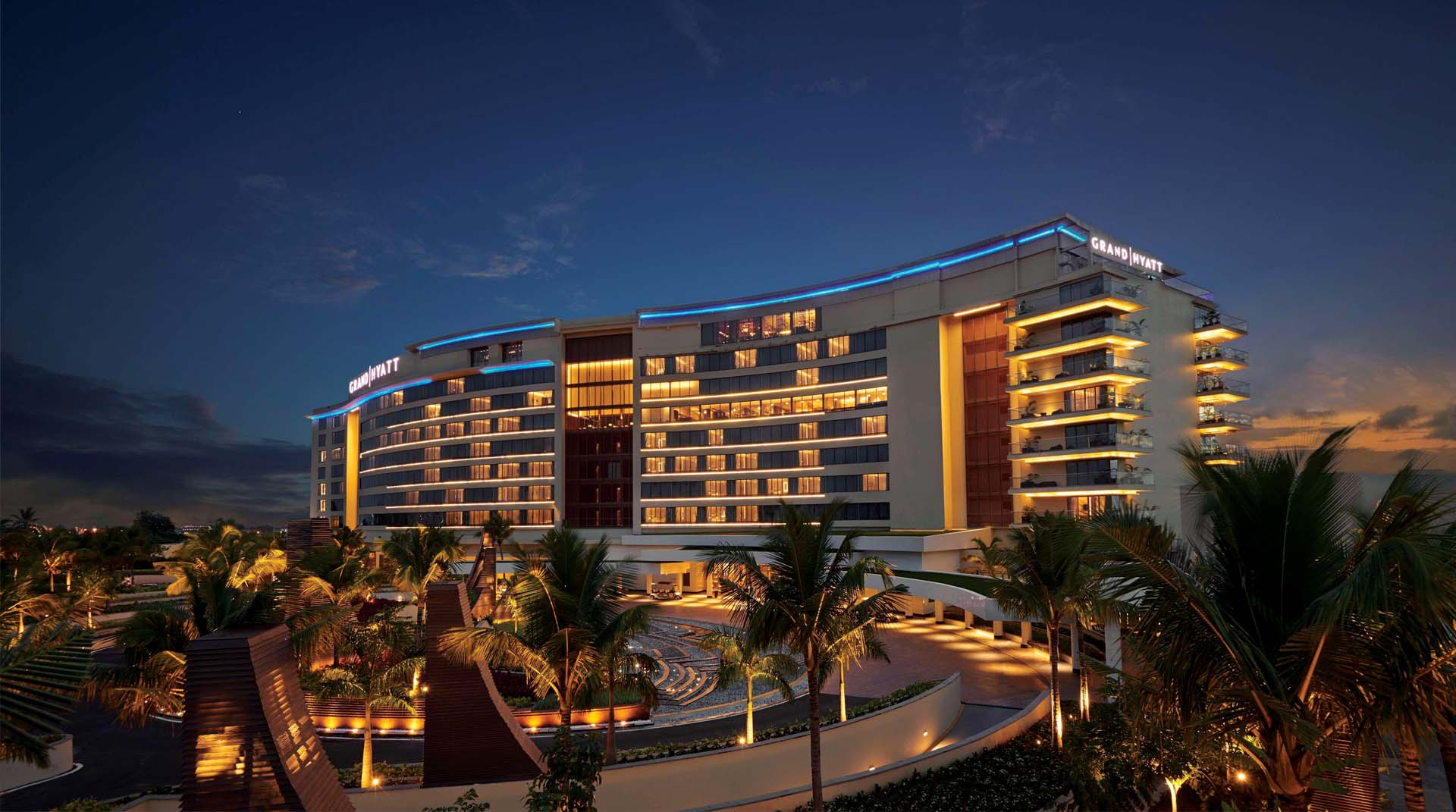
Nestled on the serene Bolgatty Island, Grand Hyatt Kochi Bolgatty is a luxury waterfront resort that blends contemporary design with cultural influences.
Challenges inherent in emerging destinations
Infrastructure remains the single biggest hurdle—ranging from limited airports and last-mile connectivity to trained manpower and complex regulations. Bakaya notes, “We address this by partnering closely with local stakeholders and upskilling local talent.” Hyatt’s Mittal underscores the need for “continued investment in physical infrastructure—better roads and airports—as well as digital connectivity to create a sustainable hospitality ecosystem.”
Accessibility and connectivity remain major constraints. “We exercise great care in selecting the right micro-markets within these cities to ensure long-term viability,” says Accor’s Aniruddh Kumar. “We collaborate closely with experienced consultants and contractors who understand local nuances, ensuring quality aren’t compromised despite inherent risks.”
Regulatory complexity adds another layer of difficulty. “Each state has its own by-laws, which can cause development delays,” Kumar explains. “Through thorough evaluation and on-ground expertise, we navigate these challenges to keep projects on track.” He adds that property owners often need guidance to align with branded hotel standards—“from global compliance to brand positioning”—a gap Accor bridges through structured advisory support.
Connectivity challenges are especially acute in experiential destinations. HVS Anarock’s Lamba observes, “Flights, road quality, and travel time affect feasibility for luxury travellers. Secondary challenges include construction logistics, supply chains, and state-specific regulations. Overcoming these operational and logistical issues is part of creating meaningful luxury experiences.”
Systemic reforms are needed. “Policy harmonisation is a key gap,” Lamba of HVS Anarock emphasises. “Although several states now recognise tourism as an industry, approval processes remain fragmented. A unified national approach to licensing, taxation, and clearances would significantly improve ease of doing business.”
For emerging destinations to reach full potential, he adds, “developing robust partner networks—local suppliers, culinary experts, and experience providers—is equally important. Addressing these gaps requires coordinated effort among industry stakeholders, state governments, and private players”.
Hoteliers are already finding workarounds. “Some are investing in solar power and water recycling to reduce dependence on public utilities, while others are partnering with state tourism departments to streamline approvals,” Lamba explains.
Brij Hotels’ Udit Kumar cites their Bundelkhand project, Brij Sone Bagh as an example: “Challenges were inevitable—last-mile access and reliable power. We addressed them by investing in solar infrastructure and working closely with state tourism and forest officials.” Manpower shortages compound the problem, which, is solved by “hiring people with no prior hospitality experience and training them to meet industry standards,” says CGH Earth Experience Hotel’s MD, Michael Dominic.
Patience and partnership, Udit Kumar contends, are key. “We look at development as a dialogue, not an imposition,” he says, calling for regional airstrips, simplified licensing for boutique hotels, and vocational training to unlock smaller destinations. His view is echoed by Sarkar, who notes they are “investing in training programs for local youth and creating flexible sourcing models”.
At The Leela, Bhatnagar notes that operational efficiencies are helping offset these challenges. “Our cost structure—with employee and power costs consistently below industry averages—gives us operating headroom. Initiatives such as our Aujasya by The Leela water bottling plant, EV boats at The Leela Palace Udaipur, charging stations, and renewable energy adoption strengthen resilience,” he says.
Bhatnagar sees collaboration as key: “India has the potential to be among the world’s top three luxury travel markets, but this requires faster regulatory approvals, globally consistent destination marketing, and scaled-up skill development.” Public–private collaboration must co-create the future of these destinations so growth remains inclusive, sustainable, and sensitive to local culture and ecology. He adds, “At The Leela, initiatives like Leela Ke Phool upcycling floral waste, Aujasya water plants, EV boats, and renewable energy adoption are our way of walking the talk—but this must become an industry-wide priority if India is to lead the next decade of luxury hospitality.”


Tea cultivation in Coonoor began in the 19th century under British planters, making it one of India’s oldest tea-growing regions.
Balancing risks and empowering local communities
Emerging destinations in India offer significant opportunities, but mitigating risk is critical. Accor develops hotels to serve multiple demand segments. “Our design and product mix are thoughtfully crafted to ensure these segments complement each other seamlessly. This multi-dimensional strategy enables us to minimise risk, maximise revenue, and build a sustainable growth model,” says Aniruddh Kumar. “We carefully assess demand drivers alongside the trajectory of future infrastructure development. Connectivity to major markets is a key factor, as it determines both accessibility and long-term viability.”
Brij Hotels approaches risk by combining gut instinct with data. “We balance risk by taking long-term contracts and exploring markets with stronger potential. Many destinations are stunning, but without meaningful traveller movement they remain unsustainable. This clarity helps us invest wisely without eroding the soul of a place,” says Udit Kumar.
Feasibility studies typically consider demand potential, connectivity, competitive landscape, and infrastructure. Nikhil Sharma of Radisson Hotel Group South Asia, adds, “Destinations offering multiple demand drivers are especially attractive, as they help mitigate seasonality and stabilise revenue streams.” Sarkar says they prioritise locations “where domestic and regional travel demand is growing but branded supply is limited”.
Investment decisions also weigh regulatory environment, land cost, competition, and the strength of local partnerships. “Balancing risk and opportunity requires phased development strategies, flexible brand positioning to match market maturity, and robust financial modelling to anticipate downside scenarios. Integrating data-driven insights with adaptable operational models enables early-mover advantages, financial prudence, and long-term value creation,” says Sharma.
Hyatt integrates local sourcing, crafts, and cultural elements to create shared value. “It’s not expansion for the sake of footprint—it’s about going where the customer is and creating value in markets where demand is evolving faster than supply,” says Mittal.
Marriott focuses on sustainable partnerships with local governments, developers, and communities. “Project Pranita trains and employs women from underserved backgrounds in hospitality management,” says Kapadia. “Over 200 women have already been enrolled, creating a sustainable talent pipeline while empowering communities.” Adapting brand identity to regional nuances is central to Marriott’s India strategy. “Travellers value both authenticity and convenience. This is reflected in design—from architecture inspired by local heritage to farm-to-table dining and curated experiences like heritage walks, culinary trails, and wellness retreats. When Marriott enters an emerging destination, we’re not just opening a hotel; we’re laying the foundation for sustained growth and integration into the broader travel ecosystem,” she adds.
The Postcard Hotel takes a similar approach, conducting detailed studies of local history, architecture, materials, traditions, and artisanal skills. “These insights shape design, operations, and guest experiences, ensuring each property is an extension of its surroundings,” says Lamba. “Architecture, materials, construction methods, and interiors are all regionally influenced—essential to ensuring the hotel truly belongs to the destination.”
Community engagement is embedded in operations. At The Postcard Gir, Maldhari community members share knowledge of the forest and wildlife. At The Postcard Durrung Tea Estate in Assam, a resident tea sommelier guides guests through gardens, factory, and tastings. “We hire extensively from surrounding communities and provide structured training to support career growth across operational roles. This not only creates jobs but preserves skills and traditions, keeping economic benefits within the community,” she elucidates.
India’s emerging destinations offer a rare confluence of opportunity and responsibility. For hoteliers and investors, success lies not merely in opening hotels but in shaping immersive experiences that honour local culture, ecology, and heritage. With strategic foresight, collaboration, and sustainable practices, India is poised to redefine the global luxury and experiential travel landscape—turning offbeat corners into the marquee destinations of tomorrow.
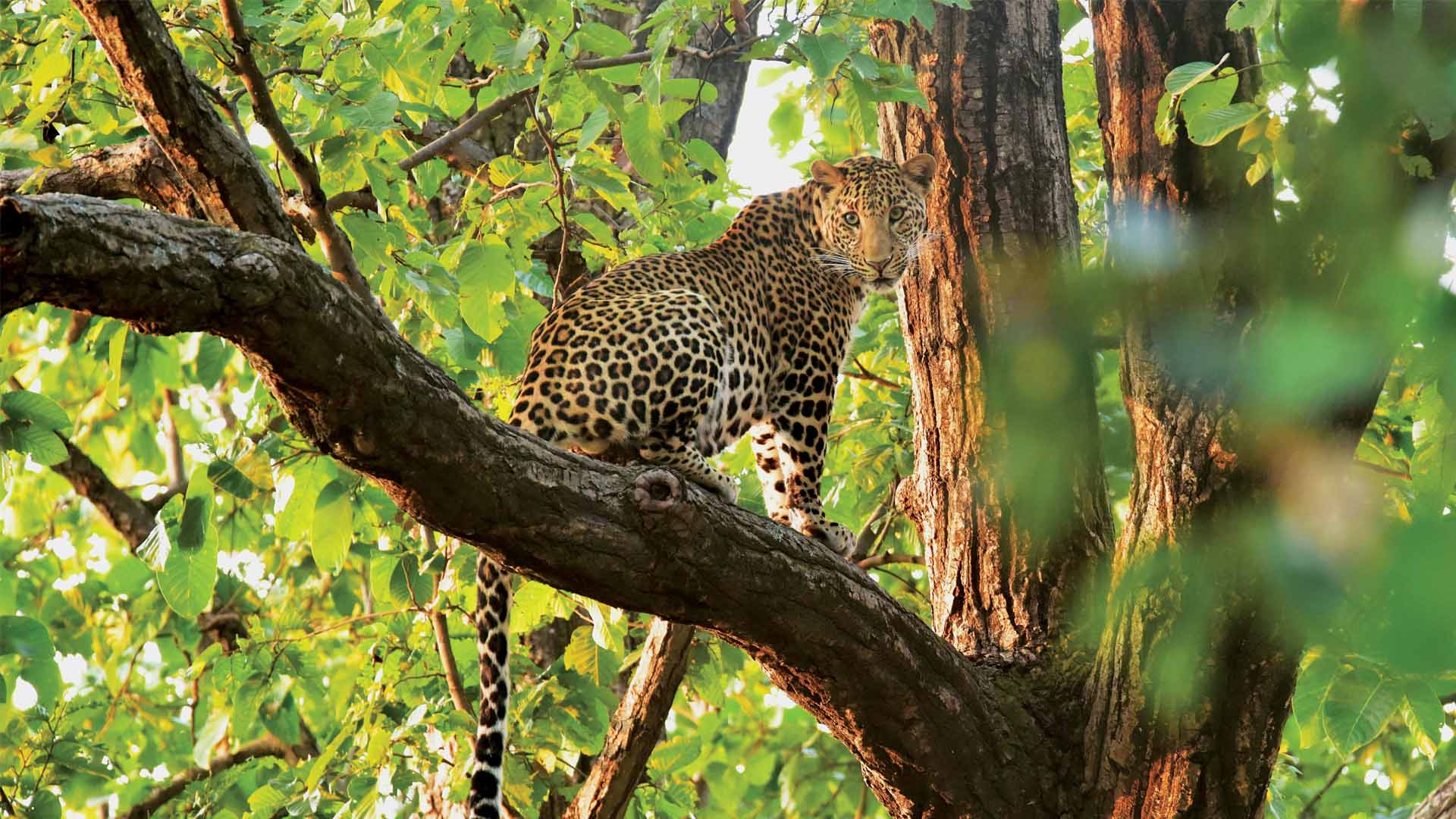

The Apatanis’ ingenious, centuries-old system of integrating fish farming with wet rice cultivation has earned Ziro UNESCO recognition as one of India’s most sustainable living landscapes.
What travellers want
- Emerging destinations are attracting audacious, experience-driven travellers, particularly in the leisure segment. “They tend to be younger, digitally savvy, adventurous, and deeply experience-driven,” says Khushnooma Kapadia, Vice President – Marketing, South Asia, Marriott International. “They prioritise discovery and connection. They want to immerse themselves in local cultures, sample regional cuisines, and engage in wellness or outdoor pursuits that align with their values.”
- Many are urban professionals seeking originality and provenance over traditional luxury. “They prefer boutique stays, cultural engagement, and sustainable practices to conventional sightseeing,” says Sarbendra Sarkar, Managing Director & Founder, Cygnett Hotels & Resorts.
- Anuraag Bhatnagar, CEO, The Leela Palaces, Hotels & Resorts, notes: “The rise of the experience-native traveller is unmistakable. Transformational travel drives high-net-worth families, younger luxury cohorts seeking cultural authenticity and design-forward spaces, and global Indians reconnecting with India through elevated cultural and spiritual journeys. Unlike traditional luxury markets, these travellers expect cultural depth, wellness, sustainability, and experiences that feel personal, intimate, and transformative.”
- Aniruddh Kumar, Vice President – Development, India & South Asia, Accor, adds: “New-age explorers, young professionals, spiritual seekers, and experience-focused international visitors seek deep cultural and historical immersion alongside modern comforts—reliable service, curated local experiences, food trails, heritage walks, wine tours, or access to spiritual sites.”
- Nikhil Sharma, MD & COO, Radisson Hotel Group South Asia, notes that social media influence and storytelling are key motivators for first-time visitors. “They expect curated experiences, boutique-style hospitality, and personalised services that reflect local flavour rather than standardised offerings. Wellness tourists gravitate to Palampur’s natural retreats, while pilgrims in Prayagraj, Katra, or Shirdi seek convenient, accessible stays.”
- In coastal towns such as Pondicherry, seafood-led dining and water-based activities are curated for guests. Pilgrimage hubs such as Ayodhya see demand for functional yet comfortable stays with vegetarian dining and wellness facilities. According to Mandeep Lamba of HVS Anarock, India’s emerging destinations will increasingly attract domestic travellers seeking short-haul leisure breaks, staycations, and spiritual or wellness-led stays. Unlike metros, where weekday demand is largely corporate, these markets see weddings, reunions, pilgrimages, and corporate travellers extending trips into leisure.
- Hotels respond with tailored offerings, integrating local culture and storytelling into design, and service without compromising comfort—introducing curated food trails, heritage walks, vineyard tours, wellness retreats, and spiritual immersions alongside MICE and leisure facilities.
- Wellness, yoga, outdoor recreation, and family-friendly activities are growing priorities in leisure-led markets, while business towns expand flexible banquet and meeting facilities. Technology—contactless check-in, mobile F&B ordering, digital concierge—enhances convenience. Successful brands balance standardisation with local relevance, maintaining quality while meeting evolving guest expectations.
- Ajay K. Bakaya, Chairman, Sarovar Hotels, explains, “Unlike established markets, emerging destinations are about discovery, so hotels need to balance global standards with a strong local flavour.” Kapadia observes, “Travellers value both heritage and convenience,” evident in architecture redolent with references of local design language, farm-to-table dining, and curated cultural experiences.
- Udit Kumar, Co-founder, Brij Hotels, highlights the rise of remote-working travellers and multi-generational families seeking meaningful activities. “Travellers expect design that blends with the landscape, sustainability that feels effortless, and service that is personal yet discreet.” Pilgrimage hubs focus on efficient check-ins and group amenities, while leisure destinations prioritise local cuisine and cultural immersion. Business cities emphasise modern meeting spaces, seamless connectivity, and efficient service.

Sikkim is India’s only fully organic state and an eco-destination.


























